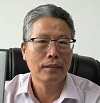Transforming frontiers: The next decade of differential equations and control processes
(This article belongs to the Special Issue Nonlinear Vibration Systems for MEMS Systems and Energy Harvesting)
Abstract
Mathematics serves as the fundamental basis for innovation, propelling technological advancement. In the forthcoming decade, the convergence of differential equations and control processes is poised to redefine the frontiers of scientific exploration. The integration of artificial intelligence and machine learning with differential equations is set to inaugurate a new era of problem-solving, enabling the extraction of latent physical insights and accelerating solution discovery. Multi-scale modeling, with its capacity to span disparate physical domains, has the potential to resolve long-standing puzzles in fields such as fluid mechanics and nanoscience. Furthermore, the integration of fractal geometry with differential equations holds the promise of novel perspectives for understanding and optimizing complex systems, ranging from urban landscapes to turbulent flows. The integration of artificial intelligence (AI) with control innovations is poised to play a pivotal role in the development of next-generation technologies, with the potential to transform diverse sectors such as medicine, communication, and autonomous systems. This paper explores these developments, highlighting their potential impacts and emphasizing the necessity for interdisciplinary collaboration to leverage their full potential.
References
[1]Liu YP, He JH. A fast and accurate estimation of amperometric current response in reaction kinetics. Journal of Electroanalytical Chemistry. 2025; 978: 118884.
[2]He JH. An Old Babylonian Algorithm and Its Modern Applications. Symmetry. 2024; 16(11): 1467. doi: 10.3390/sym16111467
[3]Dee DP, Uppala SM, Simmons AJ, et al. The ERA-Interim reanalysis: Configuration and performance of the data assimilation system. Quarterly Journal of the Royal Meteorological Society. 2011; 137(656): 553–597.
[4]Wang Y, Hou WF, Gepreel K, Li HJ. A fractal-fractional tsunami model considering near-shore fractal boundary. Fractals. 2024; 32(2): 2450040.
[5]Khan WA, Arif M, Mohammed M, et al. Numerical and Theoretical Investigation to Estimate Darcy Friction Factor in Water Network Problem Based on Modified Chun-Hui He’s Algorithm and Applications. Mathematical Problems in Engineering. 2022; 8116282. doi: 10.1155/2022/8116282
[6]He CH. An introduction to an ancient Chinese algorithm and its modification. International Journal of Numerical Methods for Heat & Fluid Flow. 2016; 26(8): 2486–2491.
[7]Li XJ, Zhao R. Physics-informed deep ai simulation for fractal integro-differential equation. Fractals. 2024; 32(1): 2450022.
[8]Xiang JX, Wang XY, Zhang XM, et al. A vision-language foundation model for precision oncology. Nature. 2025; doi: 10.1038/s41586-024-08378-w
[9]Thorp HH, Vinson V, Kmec L. Steady going in 2025. Science. 2025; 387(6729): 7.
[10]McGarigal K, Wan HY, Zeller KA, et al. Multi-scale habitat selection modeling: A review and outlook. landscape Ecology. 2016; 31(6): 1161–1175.
[11]Schmauder S, Schäfer I. Multiscale materials modeling. Materials Today. 2016; 19(3): 130–131.
[12]Nosonovsky M, Aglikov AS. Triboinformatics: Machine learning methods for frictional instabilities. Facta Universitatis Series Mechanical Engineering. 2024; 22(3): 423–433.
[13]Liu YP, He JH, Mahmud MH. Leveraging lotus seeds’ distribution patterns for fractal super-rope optimization. Fractals. 2024. doi: 10.1142/S0218348X24501433
[14]Zhang TR, Anjum N, Tian D, Alsolami AA. Fast and accurate population forecasting with two-scale fractal population dynamics and its application to population economics. Fractals. 2024; 32(5). doi:10.1142/S0218348X24500828
[15]Wang KL, He CH. A remark on Wang’s Fractal Variational Principle. Fractals. 2019; 27(8): 1950134.
[16]Tian D, Huang ZX, Xiang JJ. A modeling and experimental analysis of fractal geometric potential mems in the context of the development of 6G and beyond. Fractals. 2024. doi: 10.1142/S0218348X2450124X
[17]Zeng Y, Zhang R, Lim TJ. Wireless Communications with Unmanned Aerial Vehicles: Opportunities and Challenges. IEEE Communications Magazine. 2016; 54(5): 36–42.
Copyright (c) 2025 Ji-Huan He

This work is licensed under a Creative Commons Attribution 4.0 International License.





